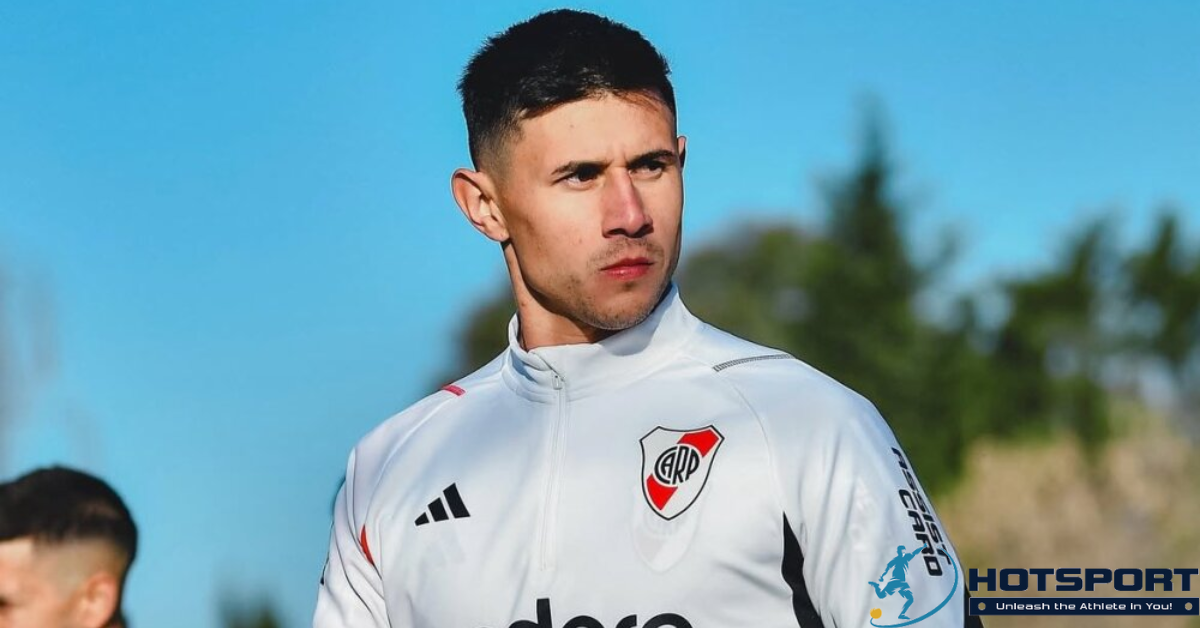Introduction – Japan vs. Brazil: more than a friendly, a strategic test
The Japan vs. Brazil match on October 14, 2025, at 7:30 a.m. (Brasília time), at Ajinomoto Stadium, is not just another warm-up game — it’s a test for the teams to position themselves for the 2026 World Cup. With Brazil already on a roll after a recent defeat and Japan looking to rebuild their performance, every detail matters: team chemistry, testing alternatives, and reaffirming their status.
For Brazil, coach Carlo Ancelotti is betting on balance: rotating the squad, maintaining defensive stability, but without losing offensive strength. This friendly serves to observe new players, test tactical variations, and get the players into rhythm. For Japan, even with qualification guaranteed, the match is an opportunity to fine-tune the structure, correct weaknesses, and establish a rivalry in front of the fans.
A full house is expected—tickets are available in advance—and broadcasts are widespread in Brazil. The match will boost the visibility of the Japan vs. Brazil match among fans, media, and bettors, generating traffic for prediction sites based on reliable statistics, odds, and predictions.
Current situation of the selections
Brazil — renewal, depth and the Ancelotti test
Brazil enters the Japan-Brazil friendly in a transitional phase with a strong emphasis on squad rotation. After the 5-0 thrashing of South Korea, the team boosted its attacking morale and validated several tactical solutions. Ancelotti, adopting a pragmatic approach, said he uses these matches as a laboratory to evaluate options and ensure depth.
The coach’s strategy is twofold: (1) maintain the core leadership (Casemiro and Bruno Guimarães) to ensure midfield control; and (2) instill rhythm in young players and attacking alternatives, testing variations of wingers and attacking players. For the match against Japan, Ancelotti made several changes, retaining only a few starters—a sign that this friendly is, indeed, experimental and strategic.
Internally, the national team also works on physical conditioning and game reading in different environments—in this case, a pitch and a Japanese crowd that imposes a different tempo on the match. The expectation is that the Brazilian team will use possession and speed on the wings to create numerical superiority and break lines.
Japan — organization, home, and the search for consistency
Japan, with qualification for the 2026 World Cup already secured, views the Japan-Brazil friendly as an opportunity to fine-tune the balance between defense and attacking transition. The Japanese national team typically combines young players with players from Europe, aiming to maintain high-intensity runs and quick runs down the wings.
In recent warm-up matches, however, Japan has shown inconsistency: draws and losses against high-level teams have revealed problems converting possession into clear-cut chances and withstanding the physical impetus of more aggressive opponents. As the match takes place in Tokyo, the Japanese team will try to exploit the local factors—the crowd and adaptation to the pitch—to impose their initial rhythm and test their ability to withstand high pressure.
If Japan gets the compactness right and takes advantage of the transitions with Minamino, Doan and Ogawa, it could cause discomfort to the Brazilian team, especially if there is defensive disharmony in the team.
History between Japan and Brazil — Brazilian dominance and confrontation trends
The Japan-Brazil matchup’s historical record is remarkable: Brazil has never lost to Japan in official or friendly matches. In recorded encounters, Brazil has a clear advantage in victories and goals scored. This dominance isn’t just numerical—it has a psychological impact: Brazil enters the match with a favorable track record, while Japan bears the pressure of overcoming a historical hurdle.
Patterns observed in previous matches: matches with a tendency to have more than 2.5 goals, Brazil’s dominance of possession on most occasions, and a greater ability to capitalize on individual errors in decisive moments. These patterns help build anticipation for a duel in which Brazil starts as the favorite, but with the risk of stumbling if mistakes are made.
| Statistic | Value |
|---|---|
| Disputed confrontations | 13 |
| Brazil’s victories | 11 |
| Draws | 2 |
| Japan’s victories | 0 |
| Brazil’s goals in these matches | 35 |
| Japan’s goals in these matches | 5 |
| Matches with more than 2.5 goals | 9 / 13 |
| Brazilian victories on Japanese soil | 8 / 8 |
| Most recurring score | 2-1 / 3-1 (favorable to Brazil) |
This historic dominance reinforces Brazil’s aura of favoritism entering the Japan-Brazil duel. Brazil has never been defeated on Japanese soil, which weighs heavily on the team’s psychological well-being.
Recent statistics and national team form
Table A — Recent form in the last 5 games (Brazil and Japan)
Data based on public results up to October 2025.
| Selection | Recent games (5) | Victories | Draws | Defeats | Goals scored | Goals conceded |
|---|---|---|---|---|---|---|
| Brazil | Recent friendlies/matches | 3 | 1 | 1 | ~ 10 | ~ 3 |
| Japan | Recent friendlies/matches | 3 | 1 | 1 | ~ 8 | ~ 4 |
Table B — Recent Japan-specific statistics
| Metric | Recent value |
|---|---|
| Last 6 games | 6 |
| Total goals in 6 games | 8 (average ~1.33 per game) |
| Victories | 2 |
| Draws | 2 |
| Defeats | 1 |
| Games with over 2.5 goals | 3 / 6 |
| Games with both teams to score (BTTS) | 0 out of 6 |
Interpretation: Brazil displays more consistent offensive production and a higher goal average; Japan reveals more moderate games and a lower incidence of BTTS.
Detailed Probable Lineups – Japan vs Brazil
Brazil — Estimated Training and Field Roles
Goalkeeper: Hugo Souza
Defense: Paulo Henrique, Fabrício Bruno, Lucas Beraldo, Carlos Augusto
Midfield: Casemiro, Bruno Guimarães, Lucas Paquetá
Attack: Luiz Henrique, Vinicius Junior, Gabriel Martinelli
Coach Carlo Ancelotti is expected to prioritize a hybrid formation, alternating between 4-3-3 and 4-2-3-1, ensuring a balance between possession and aggression.
The focus is on territorial control, with organized short runs and width on the wings.
- Casemiro will be the pillar of support, protecting the defense and leading the start of the build-up.
- Bruno Guimarães , in a more relaxed role, acts as a link between midfield and attack, ensuring fluidity and support for the wingers.
- Lucas Paquetá plays a creative role: he drops back to organize, but also infiltrates and finishes — he’s the one who sets the pace in the final third.
Up front, the attacking trio of Luiz Henrique, Vinícius Jr., and Martinelli will be responsible for accelerating transitions and creating width.
Vinícius Jr. is the main offensive outlet, seeking diagonal runs at speed; Martinelli provides depth on the opposite flank, while Luiz Henrique contributes with repositioning and constant movement.
The defense is still a testing point. Beraldo and Fabrício Bruno form a young duo, good at running the ball but vulnerable to aerial balls.
The full-backs’ involvement will be crucial: Carlos Augusto supports well and shoots from mid-range, but he can leave space—something Japan will try to exploit.
In short, Brazil must dominate possession (between 58% and 65%) and seek to involve the opponent with quick circulation and short triangulations on the flanks.
Japan — Expected Formation and Collective Strategy
Goalkeeper: Zion Suzuki
Defense: Seko, Watanabe, Junnosuke Suzuki, Ito
Midfield: Sano, Tanaka, Nakamura
Attack: Minamino, Doan, Ogawa
Japan comes into the Japan-Brazil match with a disciplined approach and coordinated transitions.
Coach Hajime Moriyasu is expected to adopt a compact 4-2-3-1 formation, transitioning to a 4-4-2 defensively.
The defensive line is cohesive, but tends to drop back too much. Watanabe organizes the attack, while Ito is the more attacking full-back, exploiting fast passes.
Tanaka and Sano form the midfield engine: they win back the ball and initiate the short transitions that characterize the Japanese style.
In attack, the trio of Minamino, Doan and Ogawa offers diversity:
- Minamino plays as a mobile attacking midfielder, floating between the lines and infiltrating the space between Casemiro and the defenders.
- Ritsu Doan , with his foot switched to the right, looks for short dribbling and medium-range shots.
- Ogawa , more fixed, will be the aerial reference and the pivot for plays at speed.
Japan tends to forgo prolonged possession (predicted average: 40%–45%) and play reactively, relying on quick recovery and vertical passing.
If they can capitalize on counterattacks and the mobility of their midfielders, they can create clear chances even with less turnover.
Tactical Factors and Decisive Keys (in-depth version)
- Positional dominance/smart transitions.
If Brazil can maintain 55-60% possession and be precise in quick exchanges, Japan will be forced to retreat further and rely heavily on counterattacks.
When Japan recovers, the transition needs to be swift and vertical to catch the disorganized Brazilian defense. - High pressure on the exits
Brazil can try to pressure the Japanese defenders on the exit with two men (Paquetá + Guimarães), forcing errors and high recoveries — especially if Japan insists on slow build-up. - Lateral Explosions and Inversions:
Vinícius Jr. and Luiz Henrique should be activated with specific inversions—switching flanks and “tricking” the opposing defense. A quick triangulation can generate penetration behind Ito or the Japanese full-back. - Aerial Strength and Crosses:
In corner kicks or high throw-ins, Brazil could have an advantage with Guimarães, Bruno, and Martinelli. Japan needs to be alert to crosses and team marking. - Pressure Time/Physical Wear
In the second half, the pace tends to drop. The team that best manages offensive substitutions could decide the game—Brazil could deploy a youngster like Endrick or reinforce aggression through the middle. - Stabilization Phases
After periods of high Japanese pressure, Brazil may enter a more secure circulation phase. This alternation (high pressure + periods of control) tends to frustrate the Japanese plan if well executed.
Extra Section — Advanced Prediction and Strategic Scenarios
Probable Game Scenarios
- Scenario 1 – Brazil dominates from the start:
If Brazil scores in the first 20 minutes, they should control the pace, pace possession, and extend their lead in the second half. Probability of victory: 70%. - Scenario 2 – Japan holds the draw until halftime:
If the score remains 0–0 until the 45th minute, Japan’s confidence grows and can exploit Brazil’s fatigue. Chance of a draw: 25%. - Scenario 3 – Japan scores first:
If Japan takes the lead, the game opens up completely. Brazil tends to react, and the duel becomes a goal-for-goal affair. Chance of a Brazilian comeback: 45%.
Market Predictions and Trends
| Bet Type | Recommended Option | Probability | Justification |
|---|---|---|---|
| Final Result | Brazil wins (2×1) | 65% | Technical superiority and favorable track record |
| Both Score | Yes | 55% | Japan offensive at home, Brazilian defense in test |
| Over 2.5 Goals | Yes | 60% | Open and offensive friendly |
| Goal by Vinicius Jr. | Yes | 58% | Tip in great form |
| Handicap Brazil –0.5 | Yes | 62% | Brazil must have technical mastery |
| Halftime Draw | Possible | 35% | Japan usually holds the 1st half |
| Goal after 75 min | Yes | 70% | Late offensive substitutions |
Risk-Based Guesses
- Main Prediction: Brazil 2 x 1 Japan
- Defensive Prediction: Brazil 1 x 0 Japan
- Aggressive Prediction: Brazil 3 x 1 Japan
- Value Prediction: Both teams to score + Over 2.5 goals
These predictions are calculated based on historical data, recent form and tactical behavior.
Supplementary Table — Combined Probabilities
| Result | Probability (%) | Expected Scenario |
|---|---|---|
| Brazil’s victory | 63 | Tactical control and offensive dominance |
| Tie | 22 | Japan is solid, but not very creative. |
| Japan’s victory | 15 | High efficiency and Brazilian defensive errors |
| Both score | 55 | Open friendly |
| Over 2.5 goals | 60 | Good trend in recent friendlies |
Final Conclusion — What to Expect from the Japan vs. Brazil 2025 Friendly Match
The Japan vs. Brazil 2025 clash is much more than a simple friendly. It represents a clash of football cultures and a decisive barometer for the development of both teams. The match reflects a moment in which Brazil seeks to rebuild its tactical identity and winning mentality, while Japan seeks to consolidate its technical development and challenge the status quo in world football.
From a collective perspective, Brazil boasts a more qualified squad, depth on the bench, and greater experience in high-stakes matches. Dorival Júnior’s team has alternated between good and bad moments, but has shown increasing consistency in recent matches. The command of the midfield by Casemiro and Bruno Guimarães, combined with the creativity of Paquetá and the offensive explosiveness of Vinícius Jr. and Martinelli, places Brazil at a superior level both technically and tactically.
On the other hand, Japan brings organization, intensity, and focus, values that translate into competitiveness. Coach Hajime Moriyasu’s work has been consistent: the Japanese team shows improvement in compactness, synchronization, and space reading. Still, their main limitation is offensive depth—they lack a center forward capable of high-quality finishing under pressure.
Statistically, Brazil has maintained a roughly 70% success rate in its last 10 matches, while Japan has around 55%. The data reinforces the prediction of a balanced match at times, but with Brazil’s superiority in the decisive moments.
The victory probabilities estimated by sports analysis and betting models range from 60% to 65% for Brazil, 20% to 25% for a draw, and 10% to 15% for Japan, reflecting the technical differences between the squads.
What can define the score
- Effective transitions — Brazil needs to convert possession into clear shots; Japan relies on quick counterattacks.
- Mental control — away friendlies test concentration; individual mistakes can be devastating.
- Tactical adjustments during the game — the coach who reacts best to the circumstances will dictate the tempo in the second half.
If Brazil can impose its volume and pace from the start, the scenario favors a solid victory, but not without scares. If Japan can hold on to the draw until the second half, it can exploit gaps and test the emotional solidity of Brazil’s new defense.
Consolidated guess and general context
Considering performance data, current form, tactical balance and head-to-head history, the most solid prediction for the clash is:
- Brazil 2 x 1 Japan
- Both teams should score, with Brazil controlling most of the possession and deciding the game in the final minutes.
This result reflects the reality of two teams at different stages: Brazil, rebuilding its path back to the world elite, and Japan, maturing as a dangerous and tactically disciplined opponent.
Frequently Asked Questions (FAQs) — Google trends and recurring questions about Japan vs. Brazil
- When and what time will the Japan vs. Brazil match be?
The Japan vs. Brazil friendly is scheduled for October 14, 2025, kicking off at 7:30 a.m. (Brasília time) at Ajinomoto Stadium in Tokyo. - Where can I watch Japan vs. Brazil live?
Broadcasts will be available on free-to-air television and sports/streaming channels (check local schedules on the day of the match). - What’s the most likely prediction for Japan vs. Brazil?
Main prediction: Brazil 2-1 Japan — a close Brazilian victory with both teams scoring. - Who are the likely starters for the Brazilian National Team?
Probable lineup: Hugo Souza; Paulo Henrique, Fabrício Bruno, Lucas Beraldo, Carlos Augusto; Casemiro, Bruno Guimarães; Lucas Paquetá; Luiz Henrique, Vinicius Junior, Gabriel Martinelli. - Has Japan ever beaten Brazil?
No—historically, Brazil has never lost to Japan in any recorded matchup. - What betting markets are interesting for this friendly?
Recommendations: “Both teams to score (Yes)”, “Over 1.5 goals”, “Brazil handicap -0.5”, and the exact score 2–1 Brazil as an alternative. - Does this match influence the squad selection for the 2026 World Cup?
Yes—friendlies serve to evaluate individual and collective performance and influence coaching decisions regarding the final squad. - What is Brazil’s expected tactical strategy?
Pressure in midfield with Casemiro and Guimarães, the use of fast wingers in transition, and Paquetá organizing the attacking triangulations. - What’s the biggest risk for Brazil in this friendly?
Disharmony due to squad rotation and the adaptation of the new defensive line, as well as physical strain from traveling. - Is there a real chance of Japan winning?
The probability exists (especially with a full house and strong local performance), but it’s statistically lower than the probability of Brazil winning.



